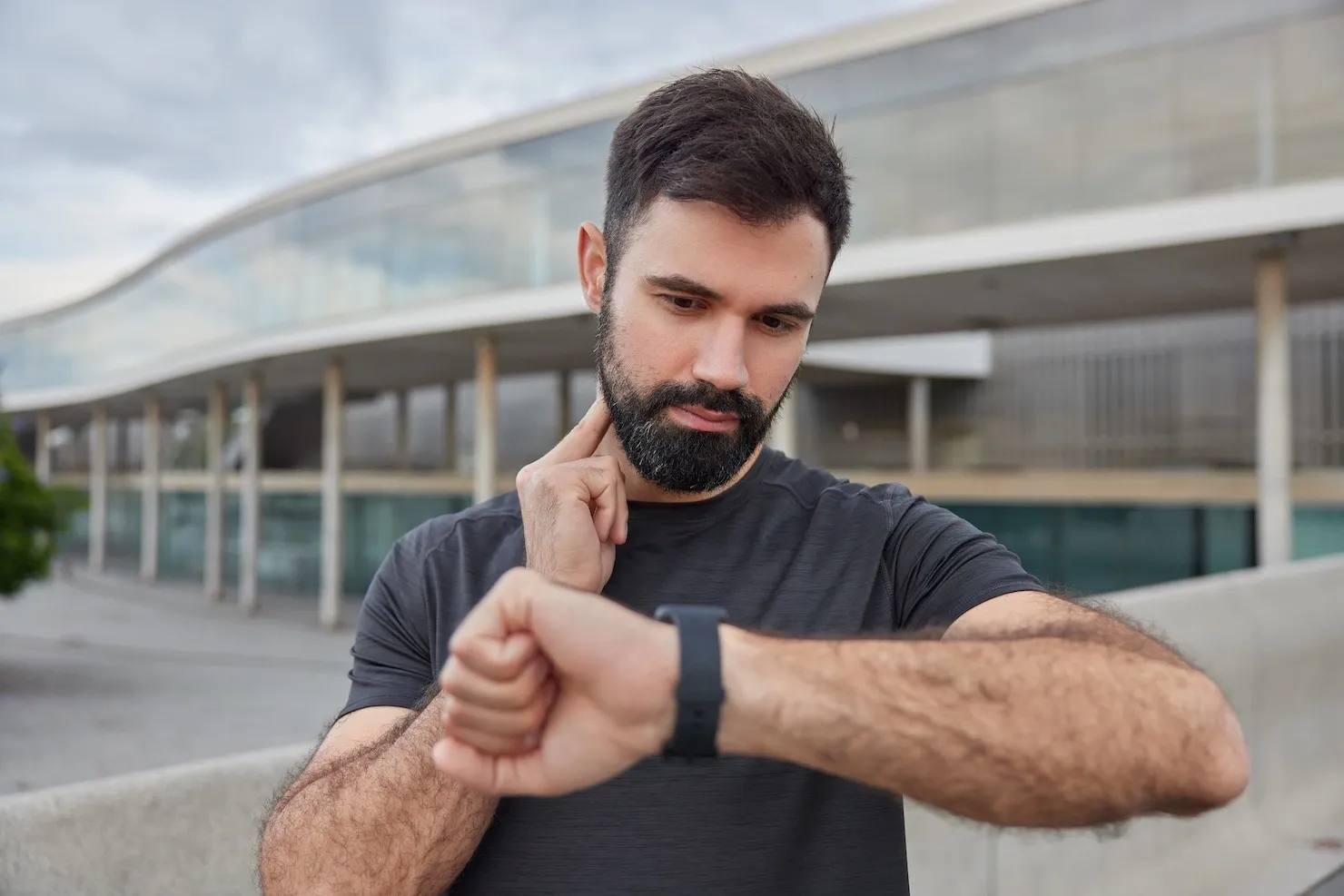Are you struggling to achieve your desired weight? Have you ever wondered why runners seem to have such slim and toned physiques? In this article, we will explore why runners are typically known for their slender frames. This information could be crucial to helping you reach your fitness goals.
Key Takeaways:
- Running alone does not guarantee a lean physique, as genetics, diet, and training regimen also play a crucial role in a runner's body composition.
- Strength training and proper nutrition are essential for maintaining a healthy weight as a runner, especially for long-distance runners who may experience muscle loss and glycogen depletion.
- Rest and recovery are as important as training for maintaining lean muscle mass and optimal weight. Balancing distance running with other forms of exercise and monitoring caloric intake is crucial for overall physical health.
The Relationship Between Running and Weight
The correlation between running and weight is influenced by multiple factors for elite runners. Elite marathon runners tend to have a lean physique due to their long-distance training, which primarily utilizes slow-twitch muscle fibers and helps preserve muscle mass. This training may also lead to weight loss, impacting body composition and overall weight. However, fast-twitch fibers are less heavily utilized, which can help minimize muscle loss and maintain glycogen stores.
What Factors Contribute to a Runner's Body Composition?
Many people wonder why runners have such lean and muscular physiques. Let's explore the various factors that contribute to a runner's body composition. From genetics and diet to training regimens, we will uncover the secrets behind the lean bodies of distance runners and professional athletes. By understanding the role of slow-twitch muscle fibers, efficient muscles, and a healthy diet, we can gain insight into how runners maintain their lean physique. Additionally, we will discuss the impact of weight and strength training on a runner's body composition and how it differs from other athletes' approaches.
#1 Genetics
- Genetic predispositions are crucial in determining body composition, influencing muscle fiber type and metabolism.
- Individuals with lean bodies may have a higher proportion of fast-twitch muscle fibers, promoting endurance over bulky muscle development.
- Those with larger muscles might possess a greater concentration of slow-twitch muscle fibers, leading to bulkier muscle development.
Sarah, a dedicated runner, discovered her genetic predisposition for fast-twitch muscle fibers, resulting in a lean physique despite intense training.
#2 Diet
- Balance Diet: Ensure a balanced diet with carbohydrates as a source of energy, lean protein for muscle development, and healthy foods for overall well-being.
- Food Supplements: Incorporate supplements like vitamin D and omega-3 fatty acids to support muscular physiques and reduce body fat.
#3 Training Regimen
- Incorporate various forms of exercise in your workout routine, including aerobic exercise and strength training, to optimize calorie burn and muscle development.
- Monitor your testosterone level, a critical factor in supporting healthy muscle mass and aiding in protein breakdown.
- Elite-level long-distance races require adjusting your training regimen to withstand the demands, balancing high calorie expenditure with adequate nutrition to maintain body fat levels.
Can Running Make You Skinny?
The lean and toned physique of runners often leads to the common misconception that running makes you skinny. However, it's more complex than just hitting the pavement and expecting to lose weight. Let's dive into the complex relationship between running and weight and how various factors such as calorie burn, muscle mass, and other forms of training can contribute to a runner's physique. Understanding the science behind running and weight can debunk the myth and uncover the truth about the perfect runner's body.
#1 Running and Calorie Burn
When considering running and calorie burn, follow these steps:
- Calculate calories burned per minute based on heart rate and running speed.
- Maintain a calorie deficit to lose weight by burning more calories than consumed.
- Maximize fat burn by depleting glycogen reserves through longer, moderate-intensity runs.
Professional Runners often have leaner muscles due to their high-intensity training, demonstrating the impact of running on body composition.
#2 Muscle Mass and Weight
- Muscle Loss: Running can lead to muscle loss due to increased cardio activity and inadequate strength training.
- Leaner Muscles: However, incorporating resistance training can promote leaner, stronger muscles.
- Glycogen Stores: Running depletes glycogen stores, potentially reducing muscle mass.
- Extra Weight: Strength training helps maintain muscle mass, preventing unnecessary weight loss.
- Optimal Weight: Balancing cardio with strength training contributes to reaching and maintaining an optimal weight, avoiding unnecessary weight loss.
#3 Other Factors that Affect Weight
- Caloric Intake: Eating habits strongly influence weight, impacting energy levels and overall health.
- Caloric Expenditure: Consistent physical activities like regular running help burn calories, affecting weight management.
- Fat Stores: The body's fat storage is influenced by distance running, impacting physical appearance and weight.
A friend of mine used to struggle with weight but found balance through distance running. By maintaining a caloric deficit and regular physical activities, they achieved a healthy weight and a lean physique, positively impacting their physical appearances.
How do you maintain a healthy weight as a runner?
As a runner, maintaining a healthy weight is crucial for optimal performance and overall well-being. However, with the intense demands of athletic competition and the long-distance training habits of runners, it can be challenging to strike a balance between a lean physique and proper nutrition. Let's explore the factors contributing to the skinny appearance of professional runners, such as glycogen reserves and leaner muscles. We will also discuss the importance of proper nutrition and strength training for maintaining a healthy weight as a runner.
#1 Proper Nutrition
- Consume a healthy diet rich in lean proteins, whole grains, fruits, and vegetables.
- Incorporate food supplements like omega-3 fatty acids or vitamin D, if needed.
- Maintain a balance of body fat to support overall health and performance.
True story: A study on male recreational marathon runners revealed that those who followed a balanced, nutritious diet showed enhanced running performance and overall well-being.
#2 Strength Training
- Include resistance training: Incorporate exercises targeting the upper and lower body to build lean muscle mass.
- Monitor race results: Assess how strength training impacts race performance by comparing race times before and after incorporating strength training.
- Adjust weekly mileage and average pace: Fine-tune running metrics to balance the addition of strength training and prevent overtraining.
#3 Rest and Recovery
One of the most common questions about runners is why they tend to have a lean and thin physique. The answer can be found in the way runners approach rest and recovery. Let's discuss how the type of muscle fibers, slow twitch, and fast twitch, play a role in a runner's body composition and weight. We will also explore the connection between running and calorie burn, muscle mass and weight, and other factors that affect a runner's physical appearance.
Why are runners so skinny?
Runners are often very skinny due to the way they train. Long-distance running activates slow-twitch muscle fibers, leading to leaner but more efficient and endurant muscles. Additionally, marathon training involves long and frequent workouts, burning large amounts of calories, and depleting glycogen reserves, resulting in a leaner body composition.
What are slow-twitch fibers, and why are they important for runners?
Slow-twitch fibers, also known as type I muscles, are muscle fibers that contract slowly and have excellent fatigue resistance. They are essential for runners as they are primarily activated during less intense activities, such as long-distance running, and contribute to endurance and efficiency in movement.
Do all runners have the same body type?
No, not all runners have the same body type. Some runners may be naturally leaner and skinnier, while others may have a larger and more muscular build. However, elite long-distance runners are often slimmer, as having less body weight can improve performance in long-distance running events.
Can running help improve mental health?
Yes, running can have a positive impact on mental health. Studies have shown that aerobic exercise, such as running, can help reduce symptoms of anxiety and depression, improve mood, and increase self-esteem and overall well-being.
What is the difference between sprinters and long-distance runners?
Sprinters who compete in short and explosive events like the 100-meter race typically have more muscular and powerful bodies. In contrast, long-distance runners who compete in events such as the marathon often have leaner and more efficient muscles, as carrying less body weight can improve performance in endurance events.
Can cross-training benefit long-distance runners?
Yes, cross-training can benefit long-distance runners by incorporating different types of exercises into their training routine. This can improve overall fitness, prevent overuse injuries, and provide variety in workouts. Examples of cross-training for runners include strength training, swimming, and cycling.
![Why Are Runners So Skinny? [In-depth Explanation]](https://wisdomrunning.com/content/images/2023/12/Why-Are-Runners-So-Skinny.webp)


